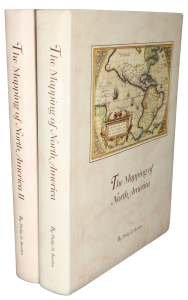Rare Maps and Prints
- World & Celestial
- North America
- West Indies, South & Central America
- British Isles
- British Isles
- English counties
- Large-scale
- Bedfordshire
- Berkshire
- Buckinghamshire
- Cambridgeshire
- Cheshire
- Cornwall
- Cumberland
- Derbyshire
- Devon
- Dorset
- Durham
- Essex
- Gloucestershire
- Hampshire
- Herefordshire
- Hertfordshire
- Huntingdonshire
- Islands
- Kent
- Lancashire
- Leicestershire
- Lincolnshire
- Middlesex
- Norfolk
- Northamptonshire
- Northumberland
- Nottinghamshire
- Oxfordshire
- Rutland
- Shropshire
- Somerset
- Staffordshire
- Suffolk
- Surrey
- Sussex
- Warwickshire
- Westmoreland
- Wiltshire
- Worcestershire
- Yorkshire
- Wales
- Scotland
- Ireland
- Western Europe
- Eastern Europe
- Middle East
- Africa
- Asia
- Australasia & Pacific
- Decorative Prints
- Title Pages
Mr. Philip D. Burden
P.O. Box 863,
Chalfont St. Giles, Bucks HP6 9HD,
UNITED KINGDOM
Tel: +44 (0) 1494 76 33 13
Email: enquiries@caburden.com
Charles Smith (fl.1799-1852) is perhaps best known for the ‘New English Atlas’ first published in 1804. A handsome work, Smith went on to specialise in British publications. In 1822, this quarto sized version of the atlas was published. The scarcity of the work indicates that it was not a great success. Only two examples are recorded; Cambridge University Library and Leeds University Library. There were two engravers involved, Gilbert Jesser Pickett (1787-1867) produced the title page and seventeen of the maps. He had previously contributed some maps for Smith’s ‘New General Atlas’ of 1814. The remainder are the work of William Robert Gardner (fl.1816-29). Worms and Bayton-Williams record a couple of interesting anecdotes about him. ‘Bankruptcy proceedings were initiated against him in September 1829, but then ‘The Times’ of 21 September 1829 reported that ‘extensive forgeries had lately been detected’. Gardner, aged about forty and of ‘ a very prepossessing exterior and agreeable manners’, had maintained an opulent lifestyle, but was now thought to have fled the country with perhaps £10,000 obtained with forged bills. He had left home on 29 July 1829 with his eight-year old son, and was later seen at London Docks seeking passage to New York. his wife and three other children were left behind, claiming to know nothing’ (Worms & Baynton-Williams).
Chubb does not record any later edition than the first illustrating how rare this work is in any edition. Provenance: private English collection. Beresiner pp. 208-9; Carroll (1996) 82; refer Chubb (1927) 388; Worms & Baynton-Williams (2011).
Chubb does not record any later edition than the first illustrating how rare this work is in any edition. Provenance: private English collection. Beresiner pp. 208-9; Carroll (1996) 82; refer Chubb (1927) 388; Worms & Baynton-Williams (2011).
SMITH, Charles
Smith's New English Atlas, Being a Reduction of his Large Folio Atlas Containing a Complete Set of County Maps ...
C. Smith, Mapseller extraordinary to His Majesty No. 172 Strand, London, 1828
Quarto (280 x 235 mm.), contemporary quarter calf, marbled paper boards. ornate blind ruling, rebacked with ribbed spine, each compartment with ornate blind ruling, red calf gilt title to the spine. With engraved title page, contents leaf, 43 engraved maps including a large folding one of Yorkshire with small binder’s tear, all in fine early outline colour, a 4 page list of Principal Towns followed by 2 blank pages for ‘Remarks’. In good condition.
Stock number: 9198
SOLD






